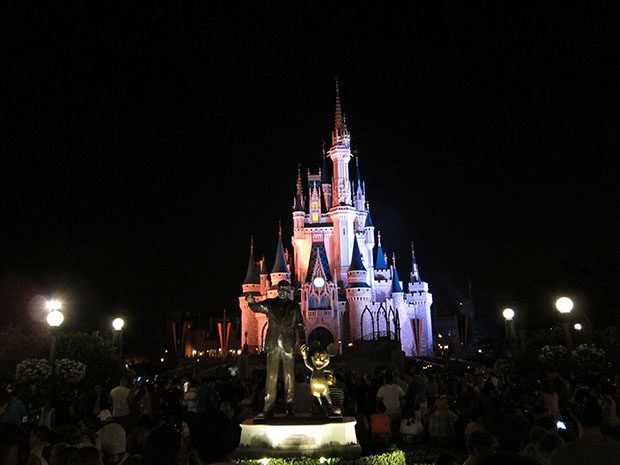Math & the Mouse

Kate Causey ’17 has always wanted to pursue a career in mathematics. But she didn’t fully appreciate the number of opportunities in her chosen field until she met the world’s most famous mouse.
Causey was one of 12 students to participate in the “Math and the Mouse” May Experience, a three-week course that took the students behind the scenes at Walt Disney World.
From examining pricing decisions to investigating theme park efficiency, Causey and her classmates learned how Disney’s employees are using mathematical models and complex systems to improve the experience of their visitors.
“It opened my eyes to other careers in the math world,” said Causey, a math major from Birmingham, Ala. “I met several young female professionals who were math majors, and had incredible jobs on the corporate side of Disney.”
Created and taught by Dr. Liz Bouzarth, Dr. John Harris and Dr. Kevin Hutson, the course was the first May Experience and study away class ever led by the Mathematics department.
The three faculty members utilized the trip to show students how the different concepts and formulas that they’ve been teaching in class could be applied in a real setting.
“We wanted to give students an experience of applying mathematics outside of their textbook,” says Bouzarth, an assistant professor of mathematics. “Many of them had never taken an applied math or operations research course, so this was a good experience for them.”
From that standpoint, Disney World proved to be the perfect destination.
The park’s employees deal with a variety of math problems, such as predicting the amount of food that visitors will consume in a single day to determining the force of a ride. Disney even calculates the scheduling logistics of its employees, or cast members, to optimize interactions with its visitors.
The students had an opportunity to learn about these problems and how Disney deals with them directly from the source, meeting with a number of employees who discussed the numbers behind the park’s operations. But it wasn’t just a listening experience. Students were expected to identify issues in the park that could be resolved with a predictive model. They also presented research from scholarly journals and wrote about their experience on a class blog.
It proved to be an enriching experience, even for students who didn’t have an extensive background in math. The course attracted students from a variety of other majors, including chemistry, computer science, neuroscience and music.
“At first, I was a little overwhelmed because only a few of us were non-math majors,” says Hayden Rudd ‘17, a chemistry major from Pinehurst, N.C. “The professors did a great job with pairing us with other students who had that experience and I got caught up quickly.”
One of the most interesting problems that Disney faces is determining how to make its park—specifically its notorious waiting lines—more efficient.
Furman’s professors challenged its students to tackle this issue in a variety of ways. The students examined the efficiency of single-rider lines at the park’s most popular rides, and developed models to better predict the waiting time for different attractions.
For one project, the students competed in the “Great Epcot Race.” Teams were required to develop and implement a math-based strategy that would lead them through 18 attractions at Epcot Center as quickly as possible. The race was akin to the “Traveling Salesman Problem,” a well-known math problem in which the salesman must find the shortest possible route between a series of points.
The idea wasn’t simply to get students to race through the park, but rather, collect data, analyze it and use it to build a model that could solve the problem.
“You’re involving them in the whole process,” says Hutson, associate professor of mathematics. “Most of the time, you give students data and they do something with it. But in this case, you have to design how you gather and use the data.”
The project inspired two students—Rahul Isaac ’15 (Kochi, India) and Danny Rivers ’17—to continue working on the problem after leaving Disney World, as part of their summer research. Isaac and Rivers set out to discover the most efficient ways to navigate Disney’s various parks. Their primary focus was an in-depth investigation into the mathematics regarding how a visitor can minimize the time spent waiting in lines and maximize the time enjoying the rides themselves.
“This was by far the best experience of my academic career,” says Rivers, a mathematics and computer science major from Raleigh, N.C.
For Causey and other students, the course showcased different career opportunities in the math field. The students met a wide variety of Disney employees who were utilizing their degrees at the theme park. Bouzarth said she wanted students to see that there are many career options available to math graduates.
“There isn’t a single career that a math major can’t do,” she said. “(Through this course), we gave them a set of skills. We showed them how to think critically, how to quantitatively work on their problem solving skills, and how to communicate and work within a group.”